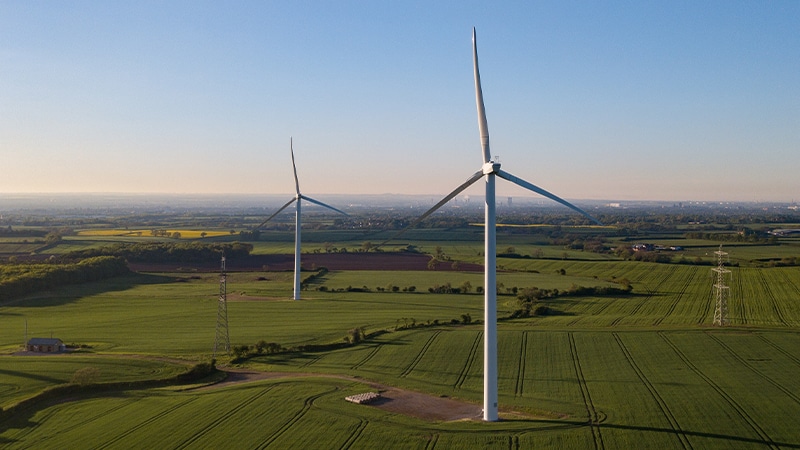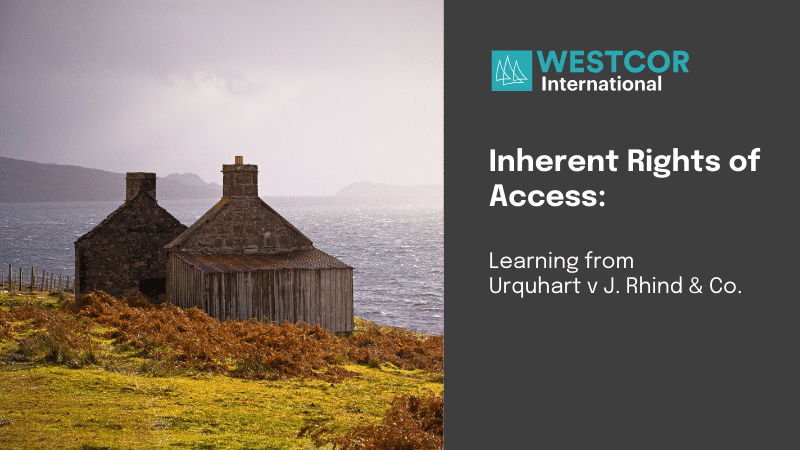World Environment Day: Blowing away the challenges facing onshore wind developers

Image: Kirsty Noble, Director of Scotland and Northern Ireland and Solicitor
On World Environment Day, our Director of Scotland & Northern Ireland, Kirsty Noble, delves into the issues taking the wind out of the sails for many renewable projects in Scotland and explains how title insurance has a part to play in furthering sustainable development.
Scotland is fortunate to be rich in natural resources that can transform energy consumption, encourage new investment and has the potential to boost the economy by an estimated £27.8 billion if we can deploy an additional 12GW of onshore wind by 2030.
Despite this, industry stakeholders are concerned that we are set to miss our decarbonisation targets – an issue that was a hot topic for discussion when Kirsty attended the All-Energy Exhibition and Conference last month.
Are climate goals in jeopardy?
The challenge put to the Scottish Government by speakers and panelists was clear. Change is required to secure continued and increased investment in the net zero energy economy. Speed, clarity and certainty should be the underpinning principles for the country’s regulatory, planning and policy frameworks. Extending the life of existing wind farms through repowering should be encouraged with the consenting process made easier for developers.
Hagshaw Hill Wind Farm was an example mentioned by several speakers. The existing wind farm comprising 26 wind turbines at 55m height to tip, and associated infrastructure with a total generating capacity of 15.6MW was consented and constructed in 1995. The turbines that currently power the project are reaching the end of their operational life span, and technological advancements to increase wind turbine efficiency are available. A Section 36 Consent was granted by the Scottish Government’s Energy Consent Unit in 2020 allowing for 14 wind turbines of up to a maximum blade tip height of 200m when vertical, each being around 6MW in power rating.
However, repowering is not without its complications. The planning process for obtaining consents can be slow. Repowering schemes are treated as new applications and assessed on a case by case basis in line with the Scottish Government’s Onshore Wind Policy Statement 2022. Whilst the current use of a site as an operating wind farm will be a significant material consideration in deciding an application, it is not a guarantee for success. Planning authorities are likely to consider the extent to which the proposals make use of existing infrastructure and limit the need for additional footprint whilst also balancing aviation, biodiversity, noise and community benefit impacts.
The Scottish Government is generally in favour of the repowering of suitable existing sites, however a presumption in favour of consent at the heart of policy and guidance would provide a more certain starting point for developers. Statutory consultees could also consider how best to use existing knowledge to allow applications to be assessed more efficiently.
Title Insurance: Empowering developers to propel towards net zero
Whilst there is an onus on the government to remove barriers at policy level, operators also face other critical issues.
Repowering brings further challenges for turbine transportation. Blades and infrastructure are increasing in size. Swept path analyses of access roads to identify pinch points continue to play an important role in ensuring project continuity. Larger equipment could mean that oversail issues appear which did not previously exist or access roads need to be widened. Developers often run into headwinds in obtaining the legal rights over private access roads where the owner is unknown or there is dubiety over the extent of roads adoption. Where owners are known, negotiations can often be difficult and protracted.
During one of the afternoon panel sessions at the All-Energy Exhibition and Conference on Pinch Points and Access Rights, there was a suggestion that developers should be awarded with specific statutory powers to take access over private land as part of policy and legislative reform. An opposing view was that whilst a framework for extending statutory rights and having a pre-set framework for what landowners would be entitled to charge might seem helpful, it could lead to resentment amongst previously supportive landowners and detract from the community benefit that projects are meant to provide.
With the pressure mounting to accelerate towards net zero, defects in title such as access, oversail or services issues and minerals reservations can cause significant delays to a time-critical project. Swift and continued deployment of onshore wind are key to ensuring Scotland’s 2030 targets are met.
Title insurance provides the speed and certainty required by developers and investors for title risks by covering against losses which are specifically tailored for renewable energy projects. At Westcor International, our technical expertise and flexible approach to underwriting allow us to deliver creative title indemnity solutions to help meet the risk management needs of operators and mitigate project delays.
If you would like to discuss a title issue for a renewable energy project in Scotland or Northern Ireland, Kirsty can be contacted on 0141 737 3079 or by email on kirsty.noble@westcorintl.com





